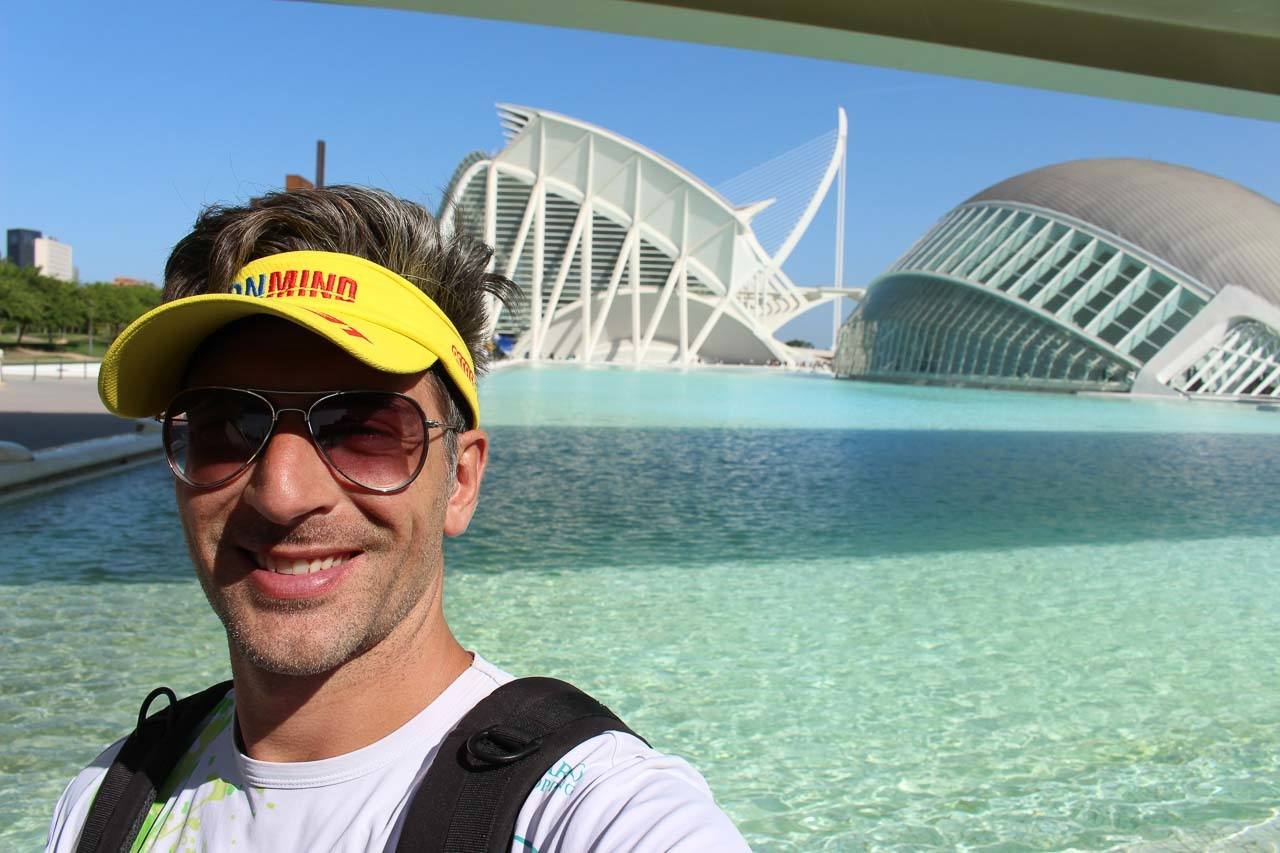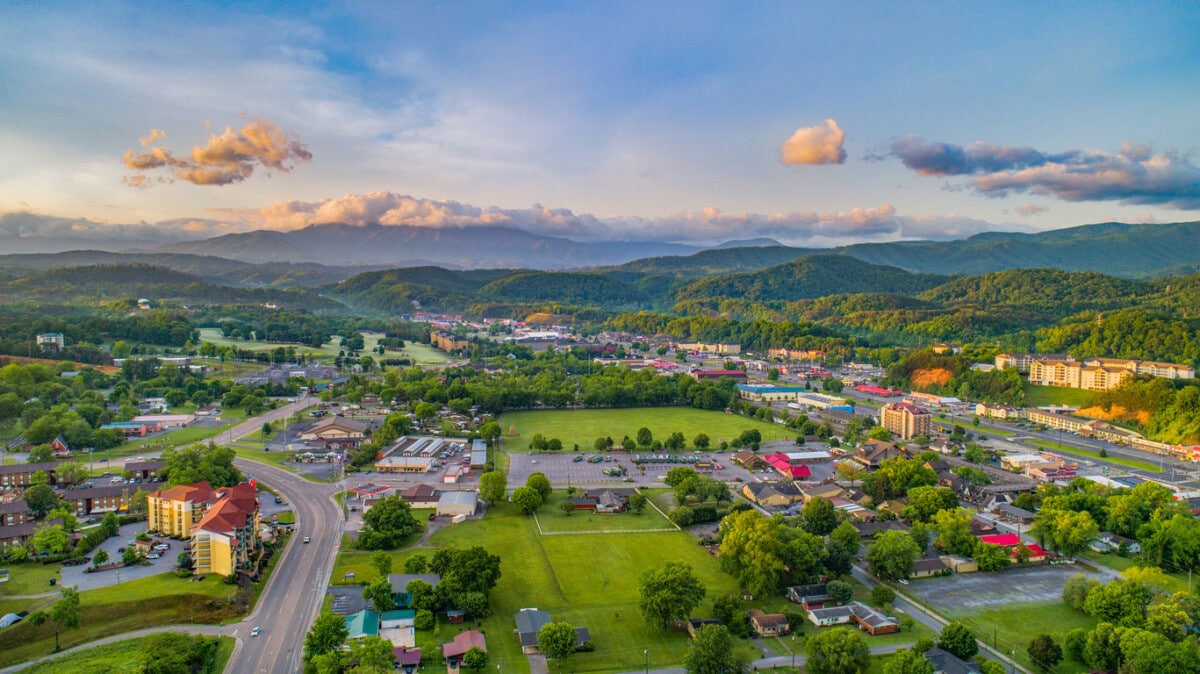Patagonia packing list 2023 – 15 essential items
12 min read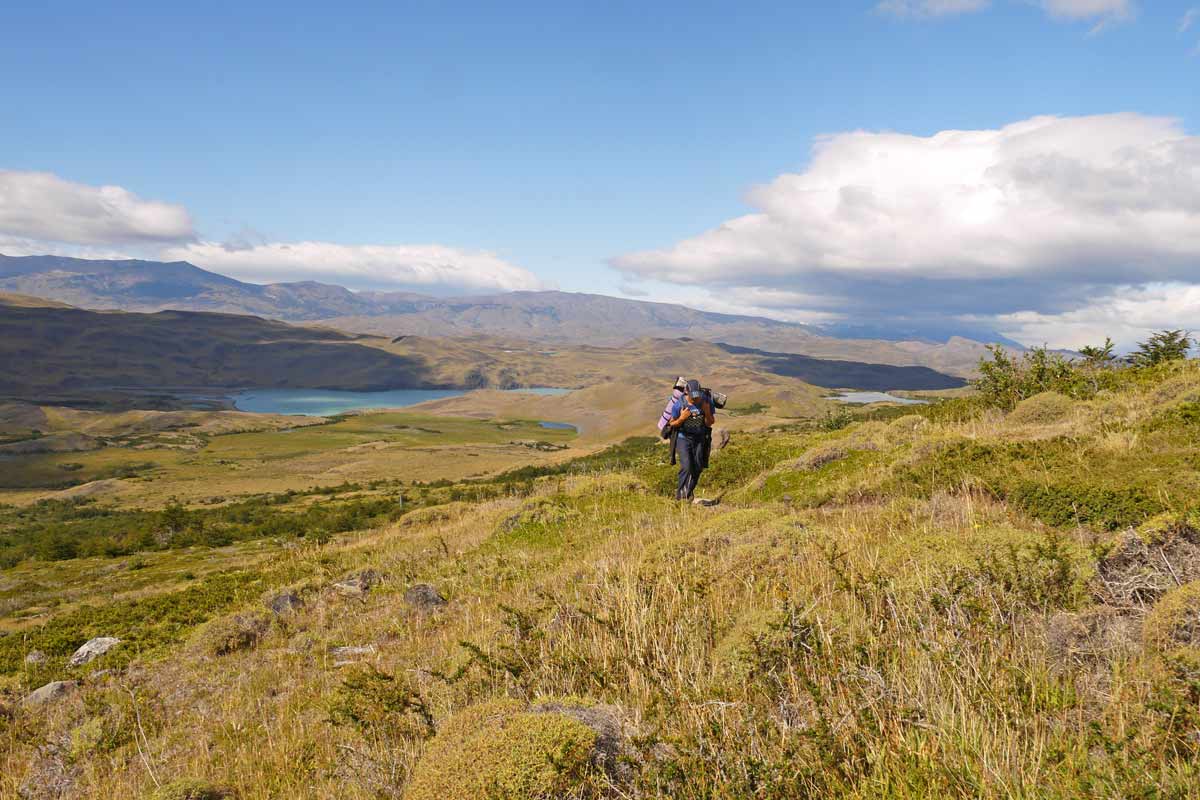
Table of Contents
When planning an adventure trip through a remote region such as Patagonia, it’s essential to pack the right gear. In this post, you’ll find a detailed Patagonia packing list that contains the 15 basic hiking items and must-have camping gear.
Patagonia is a waste region in the extreme south of South America. We spent two months hiking and camping in Patagonia mostly in Chilean Patagonia. During that time we had all kinds of weather; from hot sunny days to hail and stormwind – our gear never failed. We’ve done many day hikes in Patagonia and several long-distance treks and spent quite a lot of time traveling the Carretera Austral. In this post, you’ll find our best tips and gear recommendations for your Patagonia adventure based on our experience.
Download our PDF file with the complete Patagonia packing list

You can find all our posts dedicated to the region on our Patagonia planning resources page.
Travel insurance for Patagonia
Considering travel insurance for your trip? World Nomads offers coverage for more than 150 adventure activities as well as emergency medical, lost luggage, trip cancellation and more.
Since 2002, World Nomads have been protecting, connecting and inspiring independent travelers. They offer simple and flexible travel insurance and safety advice to help you travel confidently.
The most important items to pack for Patagonia
Backpack
For day hikes, you’ll need a small and comfortable day pack to carry only essentials, snacks, and water. We’ve become big fans of Osprey packs. We both have Osprey Daylite Plus day packs. We use them for day hikes and often as hand luggage for flying.
For long hikes having a good backpack is very important. It should be a good fit, adjustable, with padded shoulder straps and several pockets. As for the size, I’d suggest 50-60L for men and 40-50L for ladies. Don’t take a huge backpack it’s very likely you’ll pack unnecessary stuff. A backpack rain cover is a must-have for Patagonia.
Recently we’ve bought a new hiking backpack for Campbell Osprey Kestrel 48. It’s a good combination of good quality and affordable price. The size is just perfect, you can fit all the necessary gear and food for a multi-day trek. The backpack is adjustable and lightweight. It has many pockets and straps and has a long zip which makes packing and unpacking easier.
For a bigger backpack, I can suggest Osprey Atmos AG 65. If you’re looking for a cheaper option check NEVO RHINO backpacks. We have never had a backpack of this brand but it has good reviews on Amazon.
I used to hike with Quechua backpacks from the Decathlon store. My old backpack needs an upgrade and I’m thinking of buying Osprey Kyte 46. It’s important to have a water-resistant cover for your backpack.

Hiking shoes
Having the right footwear is the most important thing on your Patagonia packing list. You’ll spend most of the time wearing your shoes. Make sure your hiking shoes are;
- waterproof
- breathing
- have a good grip ( sometimes you walk on muddy slippery terrain)
- fit good which means you have some space to wiggle your toes
- are good quality and won’t fall apart after one hike.
Temperature is not a big problem in Patagonia. In summer it’s comfortable, not hot and not cold, and nice for hiking. You don’t need to pack heavy winter hiking boots. rain is the main problem here I’d strongly recommend having waterproof shoes. It’s good if your shoes have good ankle support.
After having many pairs of hiking shoes Campbell and I finally decided to try Gortex. Campbell has Salomon X Ultra 3 GTX and I have Salomon Ultra 3 Mid GTX shoes. They are really waterproof. We walked in them for hours in snow and pouring rain and our feet stayed dry. They’re great shoes to pack for Patagonia considering its unpredictable weather.
Our video on Salomon Ultra 3 GTX shoes
Wool socks
I recommend packing Merino wool socks for Patagonia. We always use them when going hiking. They don’t absorb odors, dry quickly, are very durable, and help to prevent blisters. Darn Tough hiking socks they’re famous for great foot support and blister protection. In the last 2 years, we’ve been wearing Danish Endurance socks for hiking and long-distance walking. I can highly recommend them.
To prevent blisters
- Wear Merino wool socks (they are amazing for hiking it’s tested and proven).
- Put plasters or tape on the areas where you usually get blisters before hiking.
- When your feet get wet, change your socks walking in wet socks is a sure way of getting blisters.

Clothes for the Patagonia packing list
For hiking you usually use different layers of clothing. Each layer plays an important role in keeping you warm and dry.
Rain jacket
As I already mentioned the weather in Patagonia is very unpredictable. The day might start with sunshine and end with heil or even snow. For the main top layer, I would suggest a rain and windproof jacket. We used ours a lot to stay warm and dry on rainy days. It’s an item that I would recommend packing for Patagonia. I prefer a waterproof jacket with a hood and zip pockets.
Hiking top
I prefer hiking in long-sleeve running tops. They fit well, are light, and dry quickly. Long sleeves are good for sun protection. I don’t like using sunscreen when hiking. Campbell usually has a couple of short-sleeved running tops and one or two long-sleeved shirts. Don’t pack cotton shirts for hiking they are heavy and take longer to get dry. Don’t forget to pack sports bras they’re more comfortable for outdoor activities than normal bras.
Hiking pants
Long yoga pants are my favorite hiking outfit. They’re stretchy, very light, pack small, and dry very quickly. I tried normal hiking pants but for me, they’re not as comfortable and stretchy as yoga pants. Shorts are not the best for hiking in Patagonia sometimes you walk through high grass or bush and might get scratches on your legs. I recommend packing two pairs of pants for Patagonia. Campbell always hikes in quick dry hiking pants. I don’t recommend hiking in jeans or cotton pants if they get wet it’ll take you ages to dry them. For hiking in the fall/winter season, having rain pants might be a good idea.
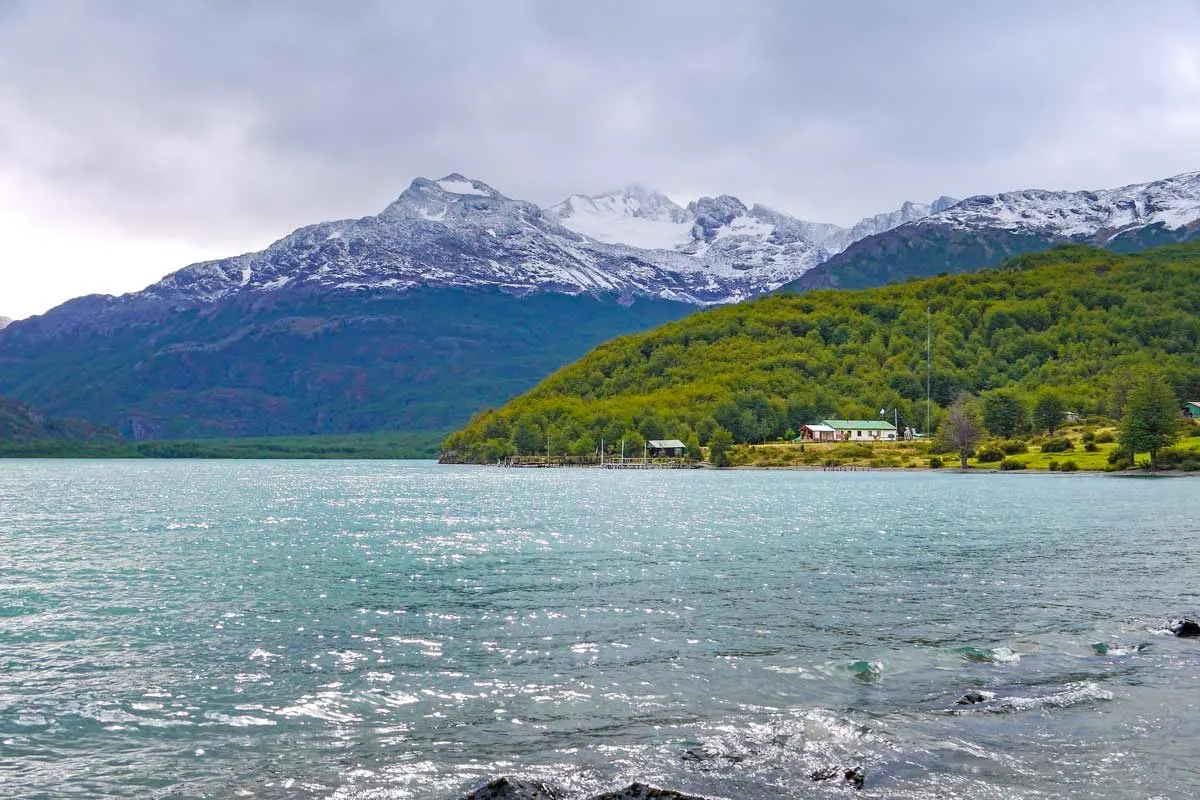
Fleece top
A fleece layer is something we wore a lot in Patagonia. In combination with a rain jacket, it works great for windy and chilly days as an alternative to a down jacket. Maybe for colder months packing a warm jacket for Patagonia is a good idea but in summer you won’t need it if you have a rain jacket and a fleece jacket.
Thermals
For an extra layer, a thermal top and bottom are a useful addition to the Patagonia packing list. You can wear it as a base layer for hiking on a cold day. I often use my thermals for sleeping when we camp. It’s warm, comfortable, packs small, and dries quickly.
Flip flops
I would definitely recommend packing flip-flops for Patagonia, especially for the summer season. You can wear them outside and inside. It’s so nice after a long day of hiking to take off your shoes and put on flip-flops. change after a long day of hiking. Havaianas are the ultimate favorites we’ve been wearing them for years.
Headwear
A cap or a hat is a must-pack item for traveling Patagonia in summer especially if you’re planning to do multi-day hikes. I personally prefer wearing a cap it’s easier to put away but a sun hat gives better protection for your neck.
In case of cold weather and strong wind, I’d recommend packing a warm hat.
Sunglasses
Sunglasses are a must-have item for Patagonia. For hiking, it’s better to buy sunglasses with high UV protection and polarized lenses. If you tend to lose or drop your sunglasses having a sunglasses strap will help you to protect them.

Patagonia is located in close proximity to the Antarctic ozone hole and receives enhanced ultraviolet B (UV-B) radiation in addition to the normal levels of ultraviolet A (UV-A) and photosynthetically available radiation (PAR). Good sun protection is a must for this area.
Miscellaneous items to pack for Patagonia
Hiking poles
Hiking poles are great to have in Patagonia. Sometimes the terrain is rocky, slippery, or muddy especially if it rains a lot so it’s great to have extra support on steep descents like John Garner Pass on the O Circuit in Torres del Paine. If you have knee or shin split issues we’d definitely recommend packing hiking poles. When choosing your poles ensure that they have an anti-shock mechanism, rubber tip, and comfortable anti-slip handles.
Water bottle
Getting water is not a problem in Patagonia, normally it’s potable but just in case I recommend using a water filter. From our experience, a LifeStraw bottle is the best and the easiest way to purify water. We use it a lot when going hiking. Unlike with some other filter systems with LifeStraw you don’t have to wait you can basically put a straw directly into a water source and drink safely.
Quick dry towel
A quick-dry travel towel is something I’d definitely recommend packing for Patagonia. We use them a lot when traveling, going to the beach, to the pool, etc. They are very light, pack small, and dry quickly. In Patagonia even if you stay in hotels sometimes you have to pay extra for towels.
Neck bag
I’d highly recommend packing a neck wallet or a small waterproof bag for Patagonia to carry your documents, money, and phone. We always keep our documents and credit cards in our neck bags not only hiking but on long bus/train journeys or when flying.
Essential camping gear for Patagonia packing list
The following gear you’ll need only if you’re planning to do multi-day treks in Patagonia. Some long-distance treks e.g. the W trek in Torres del Paine can be done without camping gear. On the other hand, if you’re planning to visit more off-the-beaten-path treks such as Cerro Castillo Circuit having your own camping gear is a great option. It’s possible to buy camping gear in bigger towns in Patagonia but your options will be more limited and prices might be higher than buying online. It’s not worth bringing the camping gear for one hike but it’s definitely worth it if you’re planning to spend some time camping and hiking in the region.
Tent
The tent must be waterproof, wind-resistant, light, and easy to pitch. If you’re an active hiker and camper we’d recommend investing more and buying a good quality tent that you’ll be using for years. We have an MSR Hubba Hubba NX tent and love it. It’s very light (1,3kg), waterproof, easy to pitch, and packs very small. We used a Hubba Hubba on several multi-day treks including the West Coast Trail in Canada and it worked great.

Sleeping pad
A sleeping pad is definitely a must-have item to pack for Patagonia if you’re going to camp. I recommend bringing an inflatable sleeping pad. It’s more comfortable than a foam pad, packs small, and can fit inside a backpack. When buying an inflatable mat make sure it has a good valve that seals properly.
Sleeping bag
After years of sleeping in sleeping bags, we’ve decided that we prefer down ones over synthetic ones. Down sleeping bags are very cozy and soft. The only problem with a down sleeping bag is if it gets wet. I’d suggest carrying it inside your backpack and not attaching it from the outside. For camping, in summer a sleeping bag with a comfort minimum of 0°C/32°F will be enough.
Cooking gear
You’ll need a camping stove for multi-day treks in Patagonia. It’s possible to get a ready meal only on some routes in Torres del Paine. We’ve been using our stove for 3 years, camping and hiking a lot and it’s still alive and works great. I’d recommend buying a stove with Piezo Ignition to be able to light it without matches or lighter.
Modern stoves weigh nothing and fold very small, you can basically put them in your pocket. When buying a stove make sure it screws onto canisters (most modern stoves do), so you can unscrew it and pack it away. You can buy screw-in gas canisters in any town in Patagonia.
You can get away with only one camping pot and use it for cooking and boiling water but you’ll have to wash it every time. We’re big coffee junkies and drink coffee every time we have a chance we boil water a lot for this reason we usually pack 2 cooking pots. One bigger pot for cooking and a smaller one for boiling water. As an option, you can buy a cooking set with pots, a stove, plates, forks, cups, etc.
To save gas when cooking pasta put it in the pot with cold water and wait till it starts boiling stirring it from time to time. Once boiling switch it off and leave it under the lid for 5 minutes, it will get cooked in hot water without using any gas.
Other useful items to pack for Patagonia
A portable charger is an important item to pack if you’re planning to spend a lot of time exploring Patagonia hiking trails.
A first aid kit is another important thing to add to your Patagonia packing list.
A headlamp is very useful for camping in the wilderness.
Weather in Patagonia
Windy is probably the main characteristic of Patagonian weather with strong winds blowing all year round and getting especially furious in the summer months of December and January spoiling nice summer days. There are four seasons in Patagonia; summer – December – February; fall – March – May; winter – June – August and spring – September – November. The best time for hiking in the area is between November and March, the warmest period though it has its disadvantages like strong wind and frequent rainfalls.
November, December, January, and March are the windiest months in Southern Patagonia* when your chances of having a windy day are between 80% and 90%. Out of the summer months, February is the least windy.
*Weather data for Torres del Paine National Park.
Find out when is the best time to visit Torres del Paine.

From October to April day temperature varies between 12°C-15°C/54°F-59°F, and the warmest nights are between December and March, around 10°C. May to September are the coldest months in some areas temperatures go down below 0°C/32°F. Some trails are closed for the off-season, not the best time for exploring Patagonia.


Summer and fall months get the most rain though the chances of rain are less than 40%. February is the most favorable month for hiking with the least rain. To resume all the above February, in general, is the best month for hiking in Patagonia; not much wind, warm and little rain the only disadvantage of hiking in Southern Patagonia in February is the number of tourists, it’s the high season there if you’re planning to trek in El Chalten, visit Perito Moreno Glacier or do hikes in Torres del Paine you’ll have to plan and book your trip in advance.

Recommended books and guidebooks
Please follow and like us:
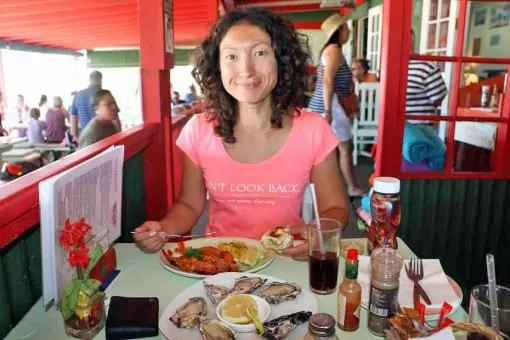
The pretty half of Stingy Nomads, responsible for all our land adventures (hiking, climbing, walking the Camino) and following them write-ups. Alya loves walking since she was a child, she prefers to walk 1000 km with a backpack rather than to do a 10 000 km road trip (actually any road trip). Alya is a big fan of Latin America, the Spanish language, and dancing. Every time we go away she desperately misses our dog Chile.


